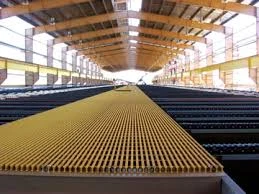
-
 Afrikaans
Afrikaans -
 Albanian
Albanian -
 Amharic
Amharic -
 Arabic
Arabic -
 Armenian
Armenian -
 Azerbaijani
Azerbaijani -
 Basque
Basque -
 Belarusian
Belarusian -
 Bengali
Bengali -
 Bosnian
Bosnian -
 Bulgarian
Bulgarian -
 Catalan
Catalan -
 Cebuano
Cebuano -
 China
China -
 China (Taiwan)
China (Taiwan) -
 Corsican
Corsican -
 Croatian
Croatian -
 Czech
Czech -
 Danish
Danish -
 Dutch
Dutch -
 English
English -
 Esperanto
Esperanto -
 Estonian
Estonian -
 Finnish
Finnish -
 French
French -
 Frisian
Frisian -
 Galician
Galician -
 Georgian
Georgian -
 German
German -
 Greek
Greek -
 Gujarati
Gujarati -
 Haitian Creole
Haitian Creole -
 hausa
hausa -
 hawaiian
hawaiian -
 Hebrew
Hebrew -
 Hindi
Hindi -
 Miao
Miao -
 Hungarian
Hungarian -
 Icelandic
Icelandic -
 igbo
igbo -
 Indonesian
Indonesian -
 irish
irish -
 Italian
Italian -
 Japanese
Japanese -
 Javanese
Javanese -
 Kannada
Kannada -
 kazakh
kazakh -
 Khmer
Khmer -
 Rwandese
Rwandese -
 Korean
Korean -
 Kurdish
Kurdish -
 Kyrgyz
Kyrgyz -
 Lao
Lao -
 Latin
Latin -
 Latvian
Latvian -
 Lithuanian
Lithuanian -
 Luxembourgish
Luxembourgish -
 Macedonian
Macedonian -
 Malgashi
Malgashi -
 Malay
Malay -
 Malayalam
Malayalam -
 Maltese
Maltese -
 Maori
Maori -
 Marathi
Marathi -
 Mongolian
Mongolian -
 Myanmar
Myanmar -
 Nepali
Nepali -
 Norwegian
Norwegian -
 Norwegian
Norwegian -
 Occitan
Occitan -
 Pashto
Pashto -
 Persian
Persian -
 Polish
Polish -
 Portuguese
Portuguese -
 Punjabi
Punjabi -
 Romanian
Romanian -
 Russian
Russian -
 Samoan
Samoan -
 Scottish Gaelic
Scottish Gaelic -
 Serbian
Serbian -
 Sesotho
Sesotho -
 Shona
Shona -
 Sindhi
Sindhi -
 Sinhala
Sinhala -
 Slovak
Slovak -
 Slovenian
Slovenian -
 Somali
Somali -
 Spanish
Spanish -
 Sundanese
Sundanese -
 Swahili
Swahili -
 Swedish
Swedish -
 Tagalog
Tagalog -
 Tajik
Tajik -
 Tamil
Tamil -
 Tatar
Tatar -
 Telugu
Telugu -
 Thai
Thai -
 Turkish
Turkish -
 Turkmen
Turkmen -
 Ukrainian
Ukrainian -
 Urdu
Urdu -
 Uighur
Uighur -
 Uzbek
Uzbek -
 Vietnamese
Vietnamese -
 Welsh
Welsh -
 Bantu
Bantu -
 Yiddish
Yiddish -
 Yoruba
Yoruba -
 Zulu
Zulu
Optimizing FRP Cover Solutions for Enhanced Structural Integrity and Durability
Understanding FRP Cover Applications, Benefits, and Considerations
Fiber Reinforced Polymer (FRP) covers are becoming increasingly popular across various industries due to their unique properties and benefits. In this article, we will explore what FRP covers are, their applications, advantages, and considerations when choosing them.
What is FRP?
FRP stands for Fiber Reinforced Polymer, a composite material made of a polymer matrix reinforced with fibers. The most common fibers used in FRP are glass, carbon, and aramid. The combination of these materials results in a lightweight, yet highly durable product that possesses significant strength, corrosion resistance, and versatility. This makes FRP an excellent choice for various applications, one of which includes FRP covers.
Applications of FRP Covers
FRP covers have numerous applications in different sectors, such as construction, transportation, and manufacturing. Here are some notable uses
1. Infrastructure FRP covers are often used in civil engineering projects, especially in bridge construction and repair. They can be applied to cover manholes, drainage systems, and other openings to protect them from environmental factors and mechanical stress.
2. Industrial Settings In industries such as chemical processing, where corrosive substances are common, FRP covers offer a level of protection that traditional materials like metal cannot. Their resistance to chemical reactions ensures longevity and minimizes maintenance needs.
3. Electrical Utilities FRP covers are also utilized in the electrical industry, primarily due to their non-conductive properties. They are often employed as covers for cable trays and other electrical components, preventing accidents and ensuring safety.
4. Marine Applications Given their resistance to saltwater and marine environments, FRP covers find significant use in the maritime industry. They are commonly used in boat and ship construction, as well as in waterfront facilities.
5. Aesthetic Solutions Beyond functionality, FRP covers can be manufactured in various colors and finishes to meet aesthetic needs in architectural designs, enhancing the overall appeal of buildings and infrastructures.
Benefits of FRP Covers
The use of FRP covers comes with a range of advantages
frp cover

- Corrosion Resistance One of the most significant benefits of FRP is its resistance to corrosion, which extends the lifespan of covers in harsh environments.
- Lightweight FRP materials are much lighter than traditional materials, making them easier to transport and install.
- Ease of Maintenance FRP covers typically require less maintenance than conventional materials, saving both time and costs associated with upkeep.
- Durability The strength of FRP makes it less susceptible to cracking or breaking under stress, providing a reliable solution for heavy-duty applications.
- Customizability FRP covers can be molded to fit various shapes and sizes, allowing for custom solutions tailored to specific needs or projects.
Considerations When Choosing FRP Covers
Though FRP covers offer many advantages, there are several factors one should consider before making a choice
- Cost While FRP covers may represent a lower lifecycle cost due to their durability and low maintenance, the initial investment can be higher than traditional materials.
- Temperature Sensitivity Some FRP materials can weaken under extreme heat or cold, so it is essential to choose the right type of FRP based on environmental conditions.
- Installation Expertise Proper installation is crucial for maximizing the benefits of FRP covers. Therefore, working with experienced professionals is recommended.
- Regulatory Compliance In specialized industries, ensure that the selected FRP covers meet industry standards and regulations for safety and performance.
Conclusion
FRP covers offer a modern and efficient solution across various industries, combining durability, versatility, and aesthetic appeal. Their wide array of applications—from infrastructure to aesthetic features—underscores their growing popularity. However, it is essential to conduct thorough research and consider all factors before deciding on FRP covers for your specific needs. As industries continue to innovate and seek sustainable solutions, FRP materials are poised to play a significant role in shaping the future of construction and manufacturing.









